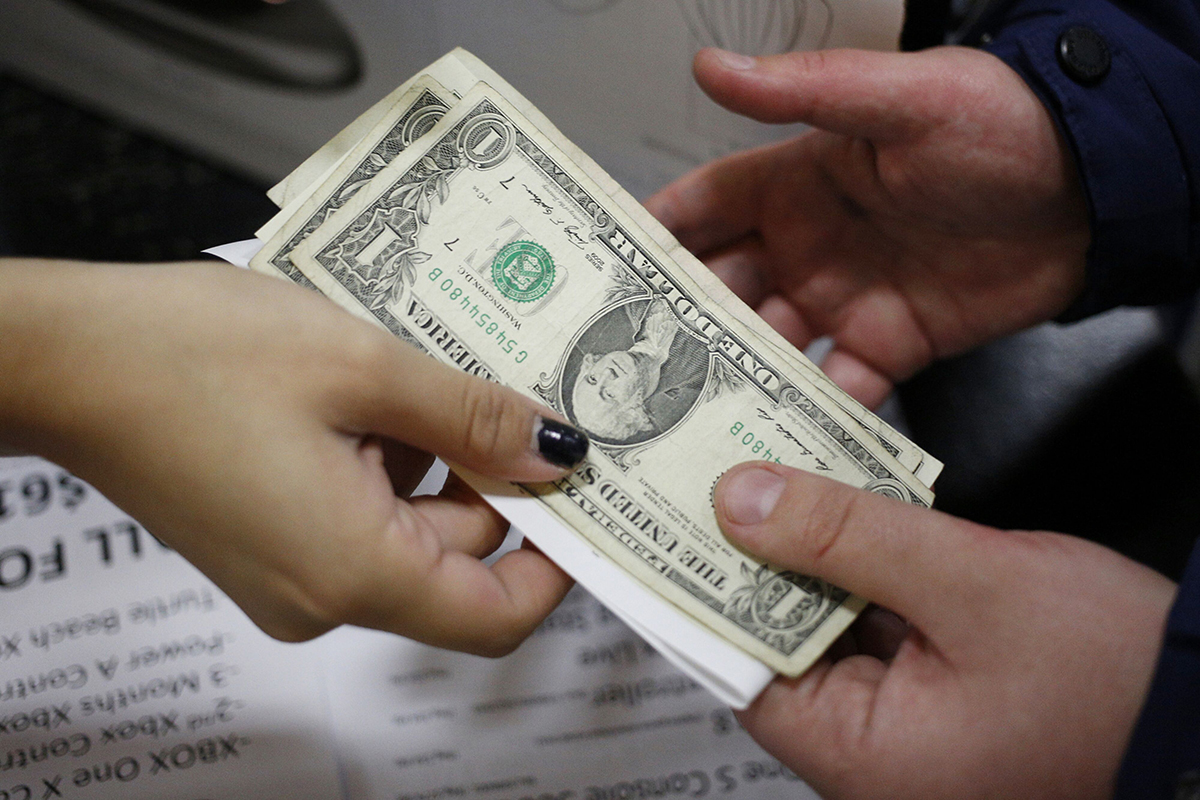 Money changes hands at a Best Buy Co. store in Louisville, Kentucky on November 23, 2017. Photographer: Luke Sharrett/Bloomberg
Money changes hands at a Best Buy Co. store in Louisville, Kentucky on November 23, 2017. Photographer: Luke Sharrett/Bloomberg
The Federal Reserve's preferred measure of underlying inflation accelerated to a four-month high in September, and consumer spending picked up, keeping the door open to another interest-rate hike in the months ahead.
The core personal consumption expenditures (PCE) price index, which strips out the volatile food and energy components, rose 0.3 percent in September, according to the Bureau of Economic Analysis (BEA) report out Friday. Inflation-adjusted consumer spending jumped 0.4 percent last month.
Recommended For You

Resilient household demand, paired with a pickup in inflation, underscores momentum heading into the fourth quarter. While economists generally expect consumer spending to slow in the coming months, Fed officials have warned that strong data could lead them to keep tightening.
The data "suggest that the Fed needs to remain on guard for somewhat higher core inflation prints before year-end," Omair Sharif, the president of Inflation Insights LLC, said in a note to clients. "Indeed, it seems like there are some upside risks heading into Q4."
| Metric | Actual | Estimate |
|---|---|---|
| Real consumer spending (month-over-month) | +0.4% | +0.3% |
| PCE price index (month-over-month) | +0.4% | +0.3% |
| PCE price index, excluding food & energy (month-over-month) | +0.3% | +0.3% |
That said, policymakers are widely expected to leave the benchmark interest rate unchanged at their meeting next week. A rapid surge in borrowing costs—10-year Treasury yields surpassed 5 percent for the first time in 16 years earlier this week—has contributed to the Fed's cautiousness.
Stock futures remained higher, Treasury yields rose, and the dollar weakened after the report.
One key area of concern for officials is service-sector prices, which rose by 0.5 percent, the most since January. Excluding housing and energy, services inflation accelerated to 0.4 percent, from 0.1 percent in the prior month.
Spending was driven by both goods and services, including on cars, prescription drugs, and international travel.
The most important support for household spending is the strength of the labor market, which at the moment remains healthy. But other factors, like a record surge in household wealth coming into this year and lingering pandemic-era savings, have played a part as well.
While wages and salaries rose 0.4 percent, real disposable income fell for a third straight month. As a result, consumers have been saving less to support their spending.
What Bloomberg Economists Say…
"Consumers continued to live beyond their means in September, with personal spending growth far outstripping income gains. … We think that dynamic cannot persist much longer."
— Stuart Paul & Eliza Winger, economists
The saving rate fell to 3.4 percent, the lowest this year. That may raise concerns about Americans' ability to keep spending at such a pace through year-end.
Separate data out earlier this week showed economic growth accelerated to a knockout 4.9 percent annualized pace in the third quarter, fueled by the strongest consumer spending since 2021. Friday's report offers insight into the potential durability of the underlying trend in consumer spending.
This quarter, forecasters estimate just 0.7 percent annualized economic growth, in part due to the growing toll of high borrowing costs on households' ability to finance big-ticket items. Other factors, including the resumption of student loan payments and a war in the Middle East, could also stifle growth.
© Touchpoint Markets, All Rights Reserved. Request academic re-use from www.copyright.com. All other uses, submit a request to [email protected]. For more inforrmation visit Asset & Logo Licensing.



